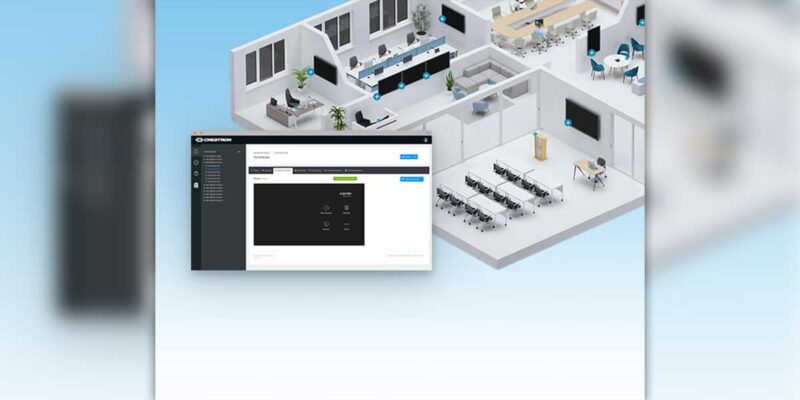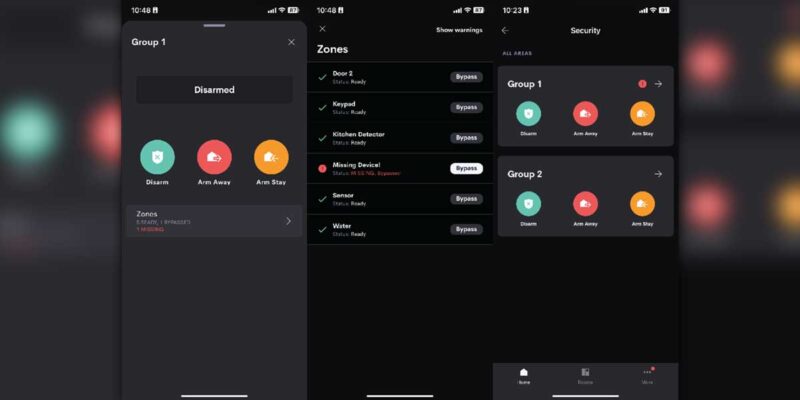Relationships: Should You Be Steady Dating, or Playing the Field?
 If anyone is a regular reader of my columns or blogs, they know that Bates College, where I work, is a Crestron house. This summer I was able to work with some products from AMX. Specifically, we had the DVX-3155HD presentation switcher, along with the Modero MXT-1000 touch panel. I was able to configure these products using the online tool AMX Rapid Project Maker. At some point, I hope to write a blog about my reaction to this equipment. This column however, is about relationships.
If anyone is a regular reader of my columns or blogs, they know that Bates College, where I work, is a Crestron house. This summer I was able to work with some products from AMX. Specifically, we had the DVX-3155HD presentation switcher, along with the Modero MXT-1000 touch panel. I was able to configure these products using the online tool AMX Rapid Project Maker. At some point, I hope to write a blog about my reaction to this equipment. This column however, is about relationships.
Anyone who has paid attention to the AV industry over the past five to six years has noticed a trend towards manufacturers trying to force you to use their equipment as a complete solution. Eight to ten years ago, we could buy a control system from one manufacturer, a switcher from another and various accessories from all over. Those days, for our basic classroom and conference room installs are by and large, over. In large part, this is due to many manufacturer putting out “all-in-one” equipment. This equipment often is a multi-input and output switcher, audio switcher, a control system and now sometimes a DSP and an amp. The manufacturer then sells accessories, such as CAT extenders that allow you to bring in remote sources. They don’t force you to use their accessories in every case, but certainly they are designed so that it makes it much easier to stick with one manufacturer.
There is no question that for the designer, integrator, installer and technology manager these products make our lives so much easier. They also make the manufacturers and their salesmen happy because they tend to tie us into one vendor tightly. As I mentioned, we are a Crestron house. Crestron has wisely provided us great customer service and access to a wide variety of resources. As I worked with the AMX product, I began to realize how difficult it would be to switch over to a new manufacturer. Don’t get me wrong, this is not about whether the AMX product is difficult to use or program. In fact, AMX’s Rapid Project Maker allows you to build a program and touch panel design in about 10 minutes — but it is different than our Crestron equipment.
As a department, we have over 15 years of experience with Crestron equipment. Obviously, if we switched to a new manufacturer, that would not all go to waste, but a huge learning curve would be in our future. So, the question becomes: Is it financially, strategically and efficient (personnel-time wise) to begin to learn about multiple manufacturers?
I am truly torn on the answer to this. What if any of these companies get bought out and change strategic direction? We may be caught off guard and our institutions could suffer financially, and more importantly, our users could suffer with equipment that was not meeting their needs. On the other hand, if your current manufacturer is giving you exactly what you need, why fix what is not broken? Should we be steady dating, or play the field?
What I do know is that for a manufacturer to get a school to switch, the manufacturer would need to make some very major concessions. Likely, these would need to be in partnership with local integrators and dealers. When I say major concessions, I mean really major. I remember a year or so ago, NEC had an offer that they would pay the programming cost when you switched to its brand from any other manufacturer. My first reaction was that this was brilliant. After all, that is one of the major reasons people don’t switch brands. Then, with more research, I realized it would offer up to $100 in programming costs. Note to all manufacturers: That is NOT a major concession. I don’t know of any programmers that would do that work for $100.
So, what is a major concession? First, the manufacturer would have to listen to how we use our systems and our rooms, and I mean really listen. They would need to send a rep to my institution who would walk through a room with me, and look, listen and learn, without trying to sell. It would then need to spec a system that could do everything we already do. It would not need to be the same way, but we would need the same functions. Second, it would need to provide the equipment at a discounted rate. This discount is about giving me the incentive to use the new product. I don’t expect free equipment, but I would expect the first sale to be at a cost that made me sit up in my chair.
Third, it would need to provide programming and configuration support. In my mind, this means that the manufacturer would have a local installer and programmer on hand for a day or two to install and configure the system. This, in my case, would need to be free. I understand that would be a concession for the manufacturer, but since we mostly do our own installs, we would lose money if we had to pay for someone to come in and do it for us. Also, we could not fumble around with the install and configuration ourselves, and waste staff time that would normally be more efficiently used.
Finally, the company would need to provide training, phone and e-mail support for free. Again, I am saying free, because we already get it for free (or don’t need it), so if we need to start paying for it, there would be no incentive to switch.
As an integrator, dealer, installer, manufacturer, what are your thoughts on this? Does anyone out there have a great program to get people to switch over? Is there any benefit to the integrators and dealers to keep all the manufacturers happy? How many technology managers out there have multiple manufacturers throughout their institutions? Let me know in the comments; I look forward to hearing from you.





